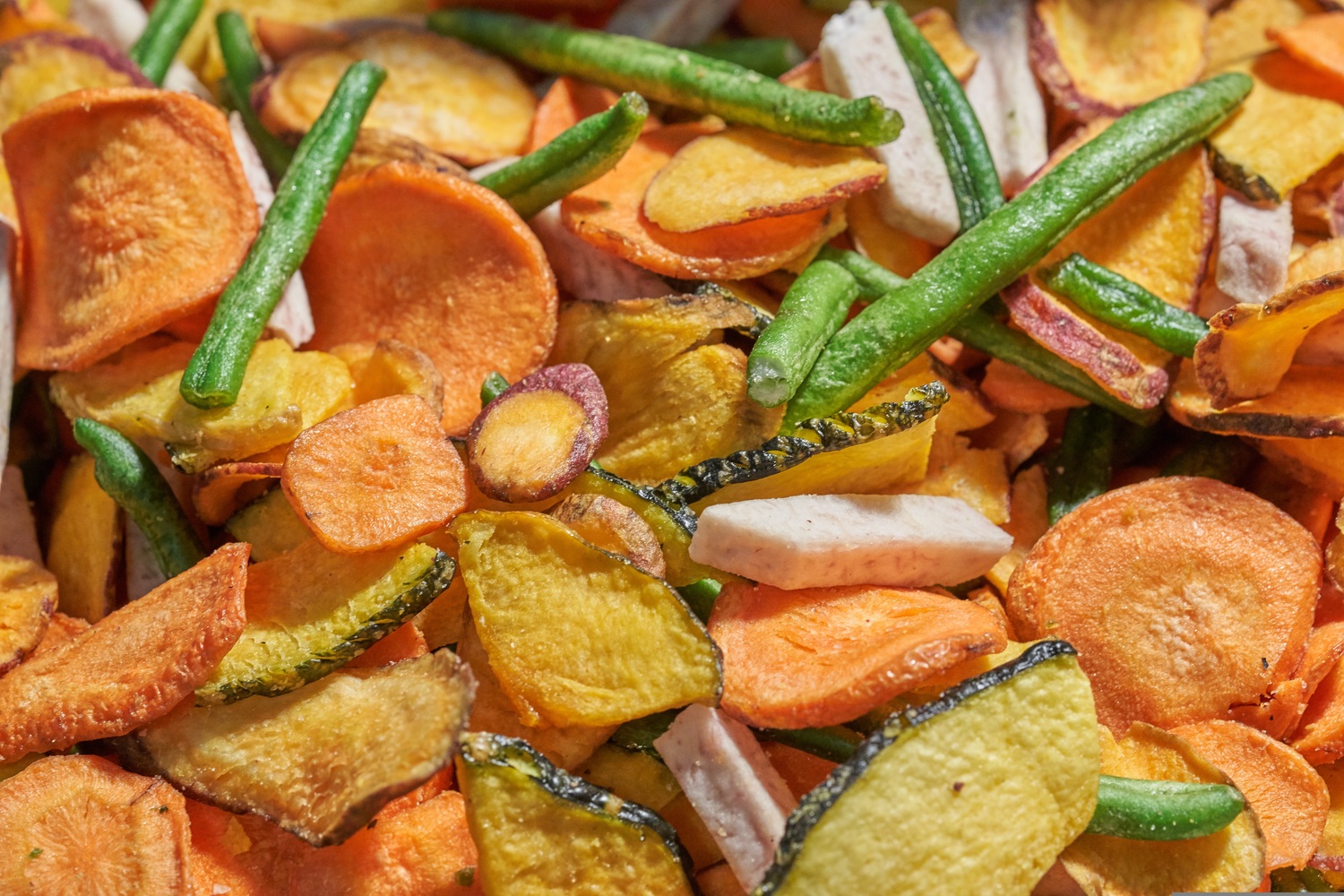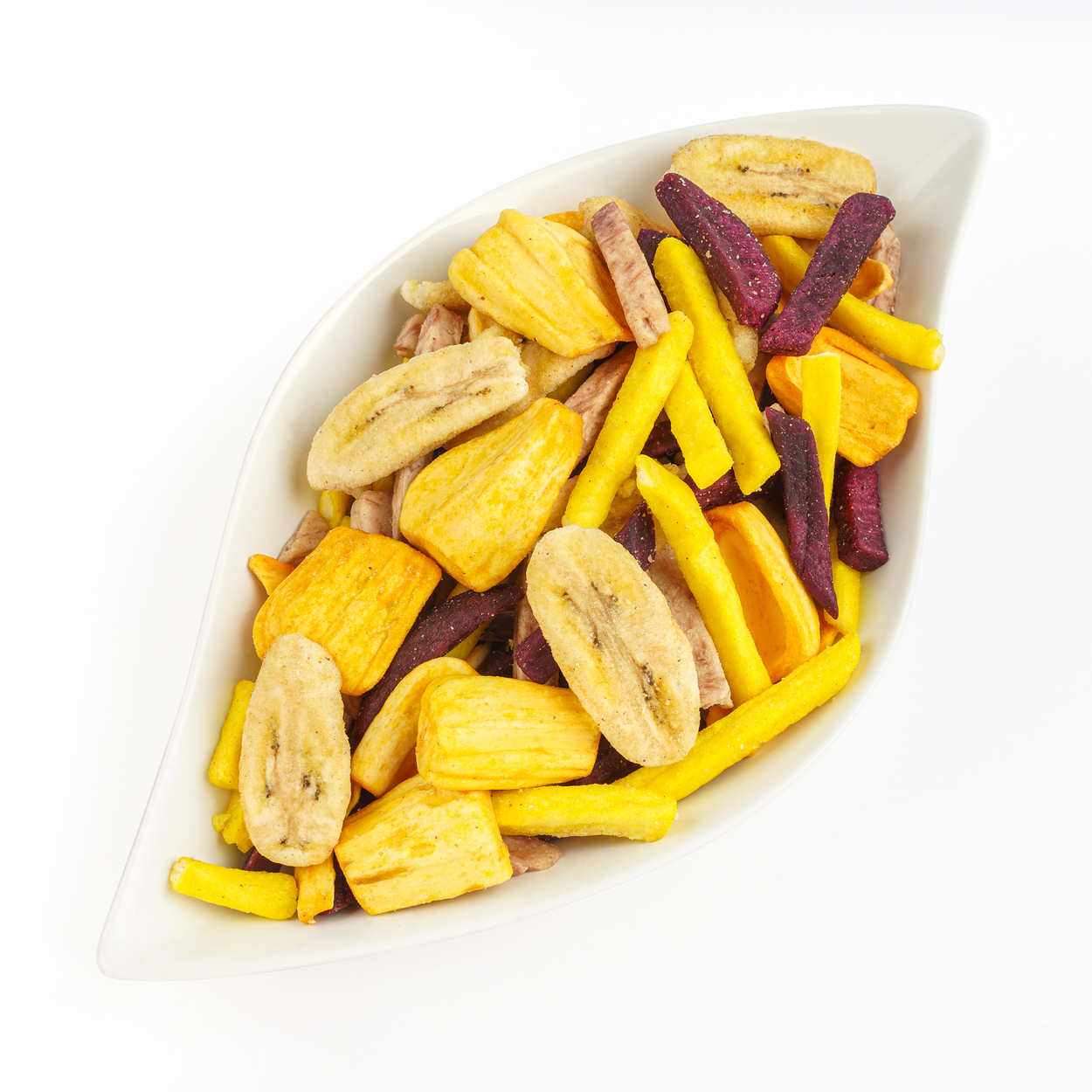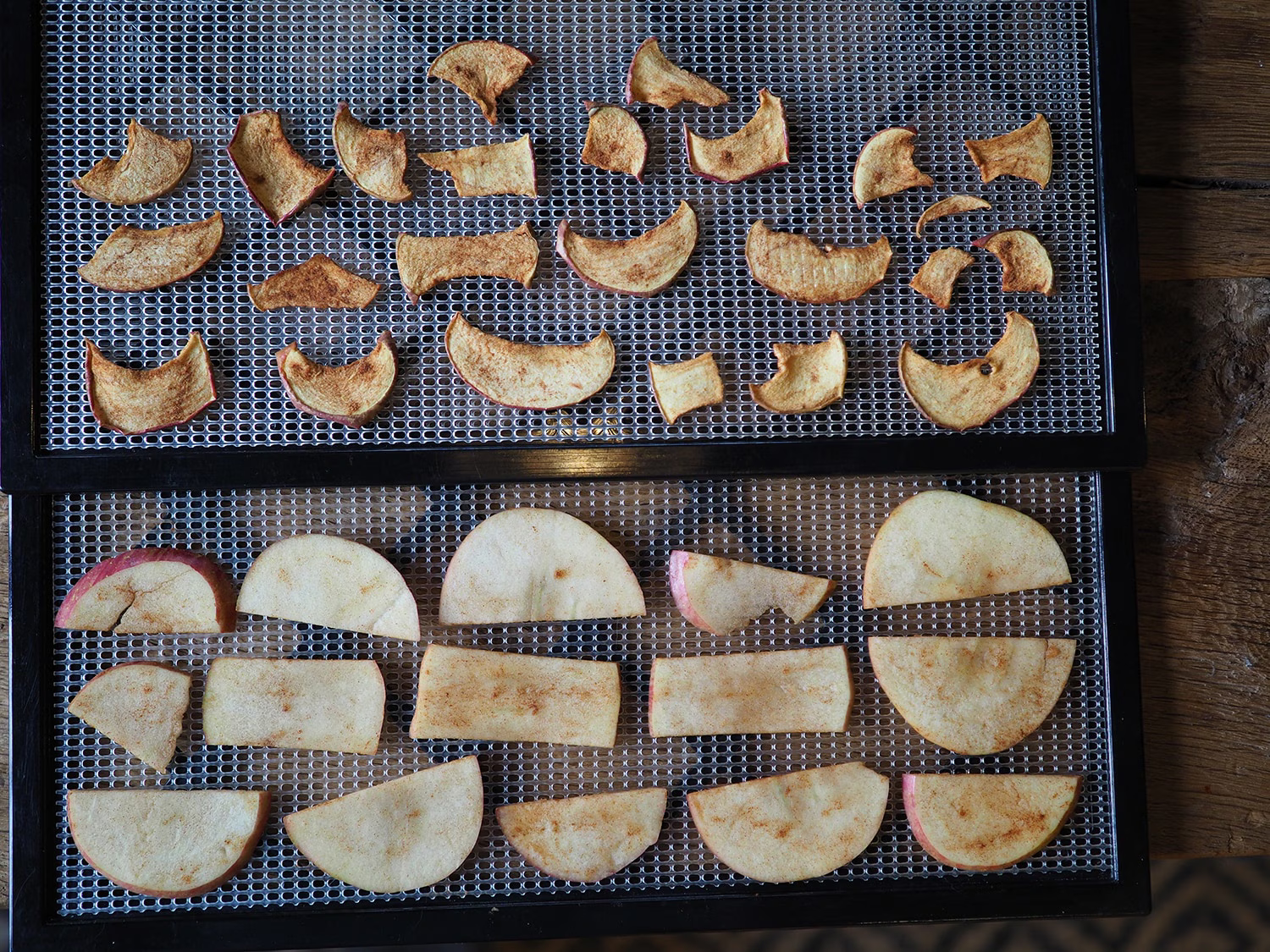Market News, News & Event
ARE DRIED VEGETABLES GOOD FOR YOUR HEALTH? HOW TO MAKE DRIED VEGETABLES AT HOME
Nowadays, many people choose dried vegetables as a snack instead of oily or fried foods. So, is eating dried vegetables really good for your health? This following article will answer that question and guide you how to make dried vegetables at home.
What’s dried vegetables?
Dried vegetables are fresh vegetables that have had most of their water removed through different drying methods. This process helps extend their shelf life compared to fresh produce. Depending on the type of vegetable and the drying method, dried veggies can be enjoyed as a healthy snack or used as ingredients in cooking.

Are dried vegetables good for your health
The answer is Yes. After removing the water, nutrients such as vitamins, fiber and minerals (potassium, calcium, iron, etc.) in vegetables will concentrate. So that our body can absorb more nutrients even if only eating a small amount. In addition, dried veggies are also rich in fiber and vitamin K, which support digestion, reduce cholesterol so that protect the heart.
Dried vegetables are rich in antioxidants, especially carotenoids in carrots, sweet potatoes, pumpkins, bell peppers, etc. These compounds help the body fight free radicals, which causes oxidative stress. Our body can also convert some carotenoids in carrots and sweet potatoes into vitamin A, thereby enhancing immunity and eye health.
Dried veggies can also meet part of the body’s daily energy needs. On average, a healthy adult needs about 2000 calories (women) and 2500 calories (men) per day. A 100g package of OCHAO’s Mix Dried Vegetable & Fruit (including sweet potatoes, taro, bananas and jackfruit) will provide about 444 calories, equivalent to almost a nutritious meal.
The table below shows the calorie content of several types of dried foods:
| Type of dried products | Calories (100g) |
|---|---|
| Dried carrot | 341 calo |
| Dried jackfruits | ~400 calo |
| Dried bananas | ~ 350 – 400 calo |
| Dried potato | 354 calo |
| Dried sweet potato | 380 calo |
| Dried taro | ~ 500 calo |
The amount of calories and nutrients consumed depends on the type of vegetables and how you combine them in your diet. Therefore, you should consume a reasonable amount of dried vegetables according to your daily nutritional needs.

How to make dried vegetables at home
Many people prefer to make dried vegetables at home to ensure safety and natural flavor. You can try making dried veggies in the oven by following these steps:
Step 1: Choose ingredients
When making dried vegetables, you should choose crispy root vegetables such as carrots, beets, sweet potatoes, taro, and potatoes. The ingredients should be fresh, free from pests, bruises, and pesticides, ensuring both quality and food safety.
Step 2: Prepare the ingredients
Wash the vegetables with clean water, peel and remove the cores, then slice them about 1–2 cm thick. The higher the water amount of the vegetable, the thicker you should slice it, because the drying process will remove moisture and cause shrinking.
After slicing, blanch the vegetables in boiling water for 2–3 minutes. You can add ½ tablespoon of salt and lemon juice to eliminate bacteria in vegetables. Once blanched, soak the vegetables in cold water for about 1 minute, then drain them completely.
Step 3: Dry the vegetables in the oven
Preheat the oven to around 140–150°F and maintain this temperature. Spread the vegetables on the baking tray and place them in the oven. The drying time depends on the type of vegetable, usually from 4 to 8 hours. After about 30 minutes to 1 hour, flip the slices to ensure even crispiness.
Each type of vegetable requires a different drying time and temperature, but the ideal range is between 140°F and under 212°F. If the temperature is too low, the vegetables may spoil. If it’s too high (around 300–320°F), they may burn, which can affect both flavor and nutritional value.
Alternatively, you can use an air fryer to make dried fruits and vegetables. Arrange the slices evenly on parchment paper, place them in the air fryer, and set the air fryer to around 175°F for 4–6 hours. Flip the slices occasionally, if you notice the edges start to brown or burn, reduce the temperature to 140°F
Step 4: Preserve the dried vegetables
After drying, some vegetable pieces may still retain a bit of moisture due to differences in size and position in the oven. To check, place the dried veggies into a clear plastic or glass jar, filling about ⅔ , then seal tightly and leave it for 2–3 days. If you notice condensation inside, dry the vegetables again to remove all remaining moisture.

Dried fruits and vegetables should be stored in a sealed, dry place to prevent moisture from entering, which could create conditions for bacteria and mold to grow. When properly stored, dried vegetables can last from 6 to 12 months. It’s recommended to include a desiccant packet in the container to maintain the right level of dryness.
If you don’t have an oven or don’t have time to make dried vegetables yourself, you can try ready-to-eat dried fruit and vegetable products from reliable brands such as OCHAO. Dried Banana, Dried Jackfruit, and Mixed Dried Fruits & Vegetables from OCHAO are made by using modern drying technology that preserves their natural flavor, color, and nutrients, ensuring safety for your health.



OCHAO is one of the member of HungHau Foods Joint Stock Company, proudly bringing Vietnamese agricultural products to over 80 countries and territories, enhancing the global value of Vietnam’s produce., OCHAO’s dried fruits and vegetables, which is made from carefully selected ingredients and free from artificial flavorings, are the perfect healthy and convenient snack for every family.
You can also check more details about the OCHAO Mixed Dried Vegetables & Fruits product at:
HungHau Foods’s website: https://hfoods.vn/product/ochao-mix-dried-fruits-vegetables/
Or at HappyFood’s website: https://happyfood.vn/san-pham/mix-rau-cu-trai-cay-say-ochao/
You can also refer to the following article: OCHAO dried bananas – A crispy, nutritious snack from nature
Contact for Collaboration:
HungHau Foods Joint Stock Company
Address: 642 Au Co Street, Bay Hien Ward, Ho Chi Minh City, Vietnam.
Email: sales@hunghau.vn
Hotline: (+84)79 721 3333
Email: Anna@hunghau.vn
Hotline: (+84)96 740 0333
Email: yenn@hunghau.vn
Hotline: (+84)78 520 3333
Website: www.hfoods.vn
Customers can explore and order products from HungHau Foods and Happy Noodles on our website or e-commerce platforms:
Website: hfoods.vn
E-commerce platforms: https://myu.vn/shop | https://shopee.vn/hunghaufood
Or visit our showrooms at:
Address 1: 889 Truong Chinh Street, Tay Thanh Ward, Ho Chi Minh City
Address 2: 727 3/2 Street, Dien Hong Ward, Ho Chi Minh City
